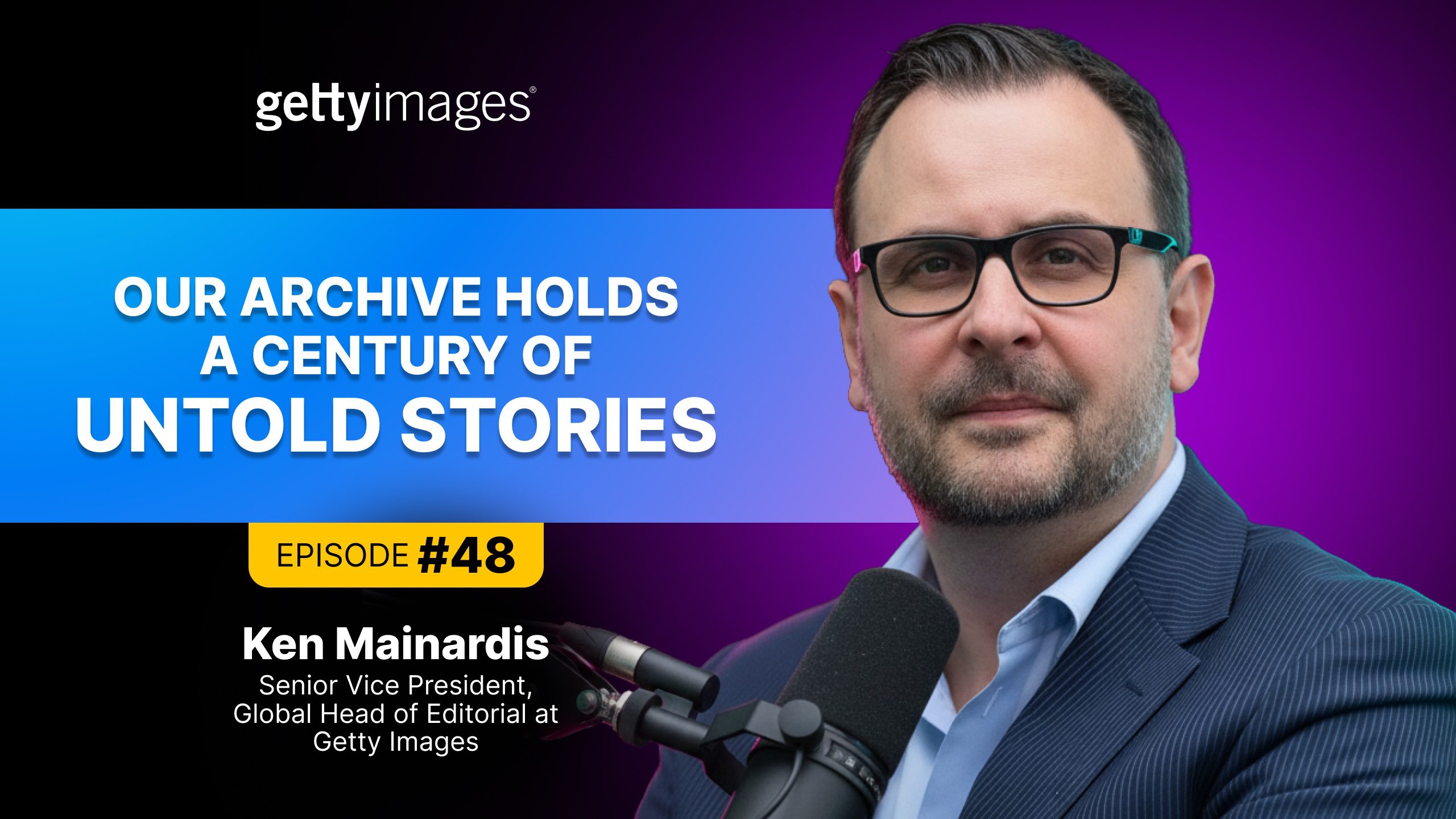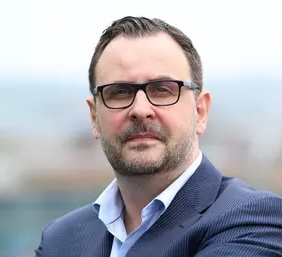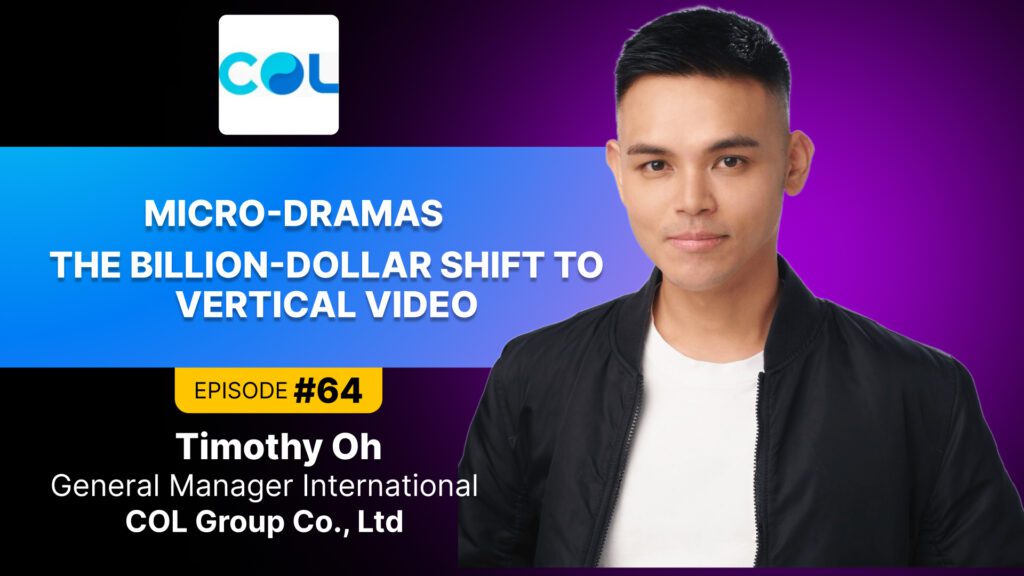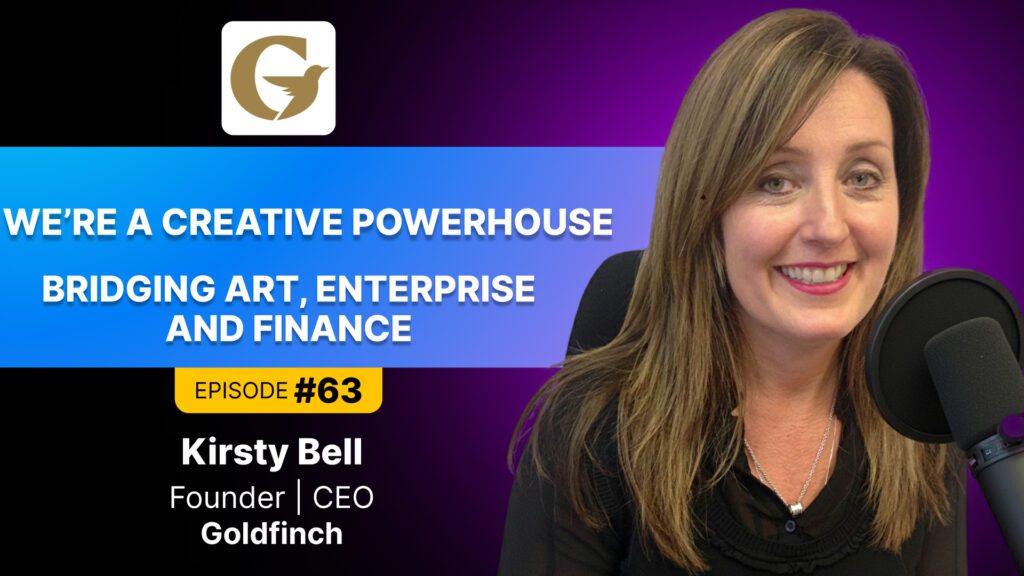We’re open to conversations around potential joint ventures, even including our content as equity in a project. That flexibility lets us become not just a supplier but a true partner in the creative process.
Podcast Chapters
| Timestamp | Chapter Title |
| 00:00 | Introduction to Getty Images and Ken Mainardis |
| 02:37 | The Role of Getty Images in Film and TV Production |
| 08:03 | Exploring the Archival Content and Its Value |
| 10:27 | The Impact of AI on Content Search and Discovery |
| 13:20 | Regional Insights: Global Trends in Content Production |
| 15:43 | Rights Management and Workflow Integration |
| 21:05 | Expanding Partnerships and Exclusive Relationships |
In Europe, we’ve had really exciting projects like the Flintoff Cricket documentary and an upcoming Matchroom Boxing series. These are examples where our approach to co-production has added real value alongside production companies.
Key Takeaways:
-
Getty Images as Creative Partner – From licensing to co-productions, empowering storytellers.
-
Vast Undiscovered Archive – Only 1% digitized, with stories waiting to be told.
-
Ethical AI in Action – Smarter search, fully rights-cleared and creator-safe.
-
Global Market Shifts – Asia, Germany, Brazil driving new production trends.
-
Strategic Partnerships – 100+ exclusive deals with top sports and entertainment entities.
Sound Bites:
-
“We operate the world’s largest privately held archive of video and stills.”
-
“That moment of discovery in the archive often sparks the next big idea.”
-
“We offer tours—it’s like a treasure hunt for untold stories.”
-
“Sport is the genre that thrives no matter what’s happening in the world.”
-
“Authenticity isn’t optional—our editorial content is 100% real, never AI-generated.”
About Getty Images
Why Partner With Getty Images?
- Over 615 million visual assets (stills and video)
- Flexible licensing and co-production opportunities
- Global reach with 600K+ content creators and 1M+ customers
- Expert rights clearance and seamless workflow integration
- Over 150 million archival visuals dating back to the 1800s
- Ethical AI tools built on fully cleared, rights-safe content
- Distribution partner for 355+ content partners, including Sony Pictures, the NBA, and BBC Studios.
- Getty Images’ video collection contains over 33 million clips, including almost 19 million in 4K.
- The official photographic partner for over 130 of the world’s leading sports leagues and governing bodies.
This is a written version of the Vitrina podcast’s “LeaderSpeak” series, featuring Ken Mainardis from Getty Images, summarized for quick reading in a Q&A transcript format.
Vitrina LeaderSpeak: A Conversation with Ken Mainardis, Senior Vice President, Global Head of Editorial at Getty Images
1. Vitrina: Could you provide an elevator pitch for Getty Images, specifically focusing on its interaction with the film, TV, documentary, and entertainment sectors?
Ken Mainardis: Our goal for the production industry is to unconstrain our partners’ creativity and our customers’ creativity. We really focus everything around our relationships with the production industry and making it as simple as possible to access the enormous sort of depth and breadth of video and stills that we can put an offer to the industry.
“Our goal for the production industry is to unconstrain our partners’ creativity and our customers’ creativity.”
2. Vitrina: Getty Images operates at a significant global scale. Could you elaborate on the size of your operations and the extent of your coverage?
Ken Mainardis: We have 1700 employees. We have over a million customers. We work with nearly 500,000 content creators, whether they are individual creators or big lines right up to the largest organizations like the BBC and NBC. We are a scaled organization that celebrated its 30th anniversary this year.
“We are a scaled organization that celebrated its 30th anniversary this year.”
3. Vitrina: Could you discuss the different divisions and businesses within Getty Images, particularly with a focus on film, TV, documentaries, and both scripted and unscripted work?
Ken Mainardis: We’re essentially organized into an editorial business—News, Sport, Entertainment, and Archive—a creative business, which is our Getty Images premium stock content, as well as our iStock content for small to medium-sized businesses. We operate a freemium offering via a business that we acquired a number of years ago called Unsplash. When we think about customers in the scripted, non-scripted production space, it’s very easy to immediately bias towards our news, sport, entertainment, and archive. But we really do offer a one-stop shop right across the full breadth of released and unreleased content, as well as asset types of video still.
“Our goal has always been to attempt to be that one-stop shop.”
4. Vitrina: At what stage of the production supply chain should a new production house consider reaching out to Getty Images? Can you walk us through how they might interact with different aspects of Getty Images from initial concept to final release?
Ken Mainardis: The very short answer is as early as possible. We are open to a conversation about projects really early in the ideation process. There is a huge value that can be brought about with the expertise that sits behind our content. We operate the world’s largest privately held archive of video and stills, and there is a huge amount of expertise that sits behind that content, around the context and the stories behind the content. When that marries with the incredible world-class creativity and knowledge that sits on the client side, on the production side, at the ideation stage, those two powerhouses of expertise can do really, really special things.
“As early as possible is we are open to a conversation about projects really early in the ideation process.”
5. Vitrina: Getty Images is increasingly involved in co-productions. Is this a recent development, and what led to this approach? How long has this effort been active?
Ken Mainardis: We’ve been steadily growing an approach to co-production now, I would say, for at least six years. Production has been an ever-growing community of partners and customers to Getty Images now, really all the way through our evolution over 30 years. That really accelerated, I would say, about 10 years ago. Throughout our history, we have seen shifts in the macroeconomic environment and the industry environment that requires us to evolve. If we’re going to continue to be the best possible partner and best possible supplier, then we do need to be flexible.
“If we’re going to continue to be the best possible partner and best possible supplier, then we do need to be flexible.”
6. Vitrina: Are there any specific case studies of large-scale or independent co-production projects that you can share, or exciting projects currently underway?
Ken Mainardis: In Europe, there’s a Flintoff cricket documentary that is very interesting. There’s an upcoming Matchroom Boxing documentary around the legendary Matchroom stable in boxing that is a really, really interesting project. I would say it’s probably about five [co-production projects] this year, to give you a sense of the volume.
“Sport is this miraculous genre of content that is able to survive the economic environment.”
7. Vitrina: Could you elaborate on Getty Images’ archival division and your partnerships in this area?
Ken Mainardis: We own the world’s largest privately held archive that dates back to the birth of photography. What is really interesting about that, I think, in the production space is it’s not just the content that’s valuable, it’s the context and stories that sit behind it. We often find production companies find it very valuable to tour these archive locations. We have three; our main location is in London, we have a space in Paris and another one in Pennsylvania. Only about 1% of that archive is digitized. And then on the other side, as you rightly say, we partner with the BBC, we partner with NBC, ITN, Sky, TV New Zealand. And we’re always looking to add large video libraries to our offering.
“It is kind of like a treasure hunt of ideas when you spend time in those archive spaces.”
8. Vitrina: Is all archival material available for licensing, and in some cases, would you consider bringing it in as a co-production component?
Ken Mainardis: Yeah, we’re excited when you see a line of sight to a commercial outcome and we see a demand, and the partner is able to outline that demand just like any co-pro conversation. We are absolutely interested in bringing in some of our partners into that conversation so that their content is part of that equity that’s going into a project.
“We are absolutely interested in bringing in some of our partners into that conversation so that their content is part of that equity that’s going into a project.”
9. Vitrina: Are there specific project qualification criteria that Getty Images looks at when considering new projects or ideas for co-production?
Ken Mainardis: We are much like everybody else in that we are monitoring and looking at the data that is sitting out there in what is performing at any given time. You’ve mentioned sport, you mentioned true crime, types of genres of history. Once we see that line of sight, it absolutely becomes a conversation. As the content experts, supply experts, we are very much here to be guided and driven by the production experts. We don’t enter that conversation driving what should be made.
“As the content experts, supply experts, we are very much here to be guided and driven by the production experts.”
10. Vitrina: Given that only 1% of your archive is digitized, how can producers access and explore this vast material?
Ken Mainardis: There are about 80 million assets online, so there’s no shortage of content online. But once you have decided you would like to explore the archive further, we offer tours to production companies of the archive. We offer access to the space. Getting in touch with your local Getty Images office, local representatives, myself, and we are always happy to arrange access to the archive.
“That moment of discovery is often a moment of ideation as much as supply.”
11. Vitrina: How is Getty Images deploying new tools and technology, particularly in the world of AI, to facilitate search and retrieval of content, including scene-level and contextual searches? 31313131
Ken Mainardis: It’s certainly a focus. We have what we believe is the leading search on our platform today, but that is absolutely a keyword-driven search. And we are very aware that there is a lot of opportunity by deploying machine learning to our search. It’s something that we are working on aggressively. There’s super exciting opportunities where you will be able to absolutely search at scene level, search at script level, at a context level. So you may begin with an individual search, but quite quickly you could start to find all of the different strands of historic background and contextual background that might come from that initial search.
“Think, think machine learning is opening up a very, very exciting future for, for the, for the, for the content search, strand of the business for sure.”
12. Vitrina: Could you discuss the regional variations you observe in the film and TV production landscape, particularly regarding scripted versus unscripted content in different parts of the world, such as Europe, the US, and Asia?
Ken Mainardis: We’ve seen Europe, driven largely by the UK over the last decade, be a real sort of leader in the unscripted, very, very high-quality documentary space. The US in non-scripted is much more personality-driven. I agree with your comment about Asia being scripted, but I think what’s so interesting about Asia is there is a very interesting developing opportunity where untold stories from Asia, from the subcontinent, but also from Southeast Asia can form the basis of really interesting projects. Some of the untold legends and myths and all of those things that aren’t part of what you could call traditional Western storytelling can become really powerful projects.
“There is a huge reservoir of storytelling in Asia that has not been accessible necessarily to Western storytelling to this point.”
13. Vitrina: With shifts in the entertainment sector, like increased activity in markets such as Brazil, Japan, and Germany, how does Getty Images respond to these changes, for example, by expanding your archive in those markets?
Ken Mainardis: Exactly. Much in the same way that I’ve outlined elsewhere, but we begin with wanting to engage with projects as early as possible to be bringing our content knowledge with the expertise of the project or the shift in a specific direction. And then when it comes to the actual content, if we feel that we have gaps we could fill or that there is a developing shift in a certain direction, then absolutely we will go out and we’re always adding partners to our roster. For example, we recently added the world’s largest motor sports archive to Getty Images.
“We’re always adding partners to our roster.”
14. Vitrina: Could you discuss workflow integrations with Getty Images, both during the concept and development phase and during production/post-production, including aspects of rights and collaboration?
Ken Mainardis: We are constantly thinking about the rights and needs of a project as we’re having a conversation. We do that right at the very beginning in ideation. Using content in an editorial sense or an editorial purpose for an editorial use within a project is extremely standard and very available. But all the way through, we’re also thinking about, is there a need to clear content for commercial use? From a relationship perspective, we’re extremely integrated in that conversation and want to be integrated in that conversation all the way through. There is the opportunities to be technically integrated via our API as well.
“From a relationship perspective, we’re extremely integrated in that conversation and want to be integrated in that conversation all the way through.”
15. Vitrina: What is Getty Images’ roadmap for the next few quarters, especially concerning AI and new production techniques? How do you view AI, particularly generative AI, in terms of competition or accelerating your initiatives?
Ken Mainardis: We’ve touched a little bit on search, and we’re very, very keen to be advancing and optimizing and improving our world-class search to be even more beneficial and sort of save customers time and make our content even more discoverable. Our AI generator, which we launched about 18 months ago, we’re very, very proud of. It is incredibly aligned with our position as far as AI goes. Our AI generator is trained entirely on content that is cleared and so that will not generate content that will provide customers with legal issues. We will continue to invest in that space, always with a mind that the content that is being created and the content that’s being used to train our AI solutions is also paying out content creators. In the editorial side of our business, absolutely no generative AI, no AI modification.
“We really believe that the future of AI and AI and content is going to be only truly valuable if content creators continue to be motivated to include their content in the training of those models.”
16. Vitrina: Could you discuss any new relationships or expanding initiatives you’re excited about with news organizations, sports clubs, or large event companies?
Ken Mainardis: Yes, there is always a new one. It’s a very, very large focus for us. The exclusive relationships we have with over 100 now sports governing bodies, leagues, and clubs, as well as entertainment organizations, like Vanity Fair and the Met Gala and the Golden Globes and the Academy of Motion Pictures and Arts. These are really, really key because they enable us to create a sort of a value chain through the industry. We are always looking and having conversations with sports and entertainment rights holders about where we could expand that exclusive access.
“The exclusive relationships we have with over 100 now sports governing bodies, leagues and clubs, as well as entertainment organizations…”





 Seattle, United States of America
Seattle, United States of America




